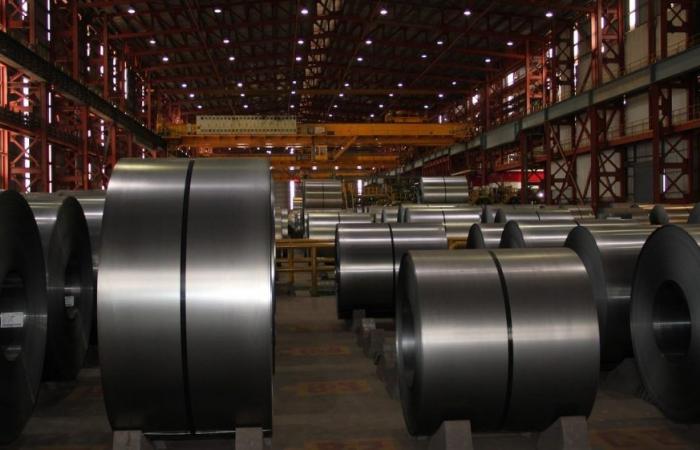Not only the natural energy hub of the entire Euro-Mediterranean area, due to its geographical location and new geopolitical scenarios. For the same reasons, the South is also the most credible candidate to become the point of arrival and departure for steel coming from and going to the countries of North Africa, as well as the hub for the transformation of incoming semi-finished products to be distributed in the rest of Europe. The new vocation, discussed and explored yesterday at Napoli on the occasion of the meeting promoted by Siderwebthe only online newspaper that deals with the steel industry, is based on rather solid foundations. But, above all, it moves within the framework traced by Mattei Plan of the Italian government which set course for Africa by launching a series of projects and investments on an equal basis with new countries, from energy to agriculture, from water resources to quality training.
The context
Steel is the new entry in this context that perhaps not everyone expected but which, as mentioned, has the credentials to become a further opportunity for the development of southern industry and at the same time increase the strategic importance of Italy’s role as a bridge between Europe and the youngest continent in the world.
In the South, steel has important numbers and not only due to the presence of Steelworks of Italy, the former Ilva, which has the largest factory in Europe in Taranto. There are 136 companies in the sector (and the number reaches 272 also considering the Centre), just under half in Campania where the group shines Sideralba (we report on it separately). Over 8 billion in turnover in 2022 (the most updated data), growing compared to the previous year, and around 3.6 million tonnes of product overall which are affected by the problems of Taranto but which at the same time signal a good boost in investments ( especially linked to the recovery of construction).
The connection
But the numbers from North Africa also indicate that the connection with Europe through Italy and in particular the South is possible, as well as convenient for everyone: in 2023, Italy was the first European country of destination for North African steel, having imported approximately 616 thousand tonnes of steel, of which approximately half from Egypt, the area’s leading exporter to the European Union with 1.363 million tonnes. In the same period, Italy exported 309 thousand tonnes to North Africa, especially to Egypt and Algeria. The South has so far covered a small percentage of this exchange, as emerges from the graph on the page, while the value of imports has been much higher: but this only reinforces the belief that there are enormous margins for growth also because the presence of large national steel groups in North Africa is known and their interest in the South is increasing (Duferco energy of the Ligurian industrialist Antonio Gozzi announced for example at the beginning of the year a 10 million investment for the production of green hydrogen in the province of Messina as part of Sicily’s Hydrogen Valley project).
The evolution
Moreover, North Africa (Algeria, Egypt, Libya, Morocco, Mauritania, Tunisia) has gone from being a destination to a source of steel for Italy and the EU in the last decade: the trade deficit with Europe, as emerged from the Siderweb meeting, has dropped from around 8 to one million tons. An evolution that can favor the South given that the regionalization of markets is now the new scenario to deal with. “The European Union today buys semi-finished products and raw materials (coils, bars and DRI) in North Africa and exports almost exclusively scrap, especially to Egypt and Morocco (over 2 million tons) – explains Stefano Ferrari, head of the Siderweb Research Office – On the one hand, the area is growing significantly, so an increase in its steel needs is foreseeable, together with a qualitative improvement in its production capacity and the products requested. On the other hand, the EU could become a relief valve for these productions, passing through Southern Italy».
Naturally, much will depend on the future of the former Ilva, which remains a point of reference for the Southern, Italian and European steel industry, but a fact that emerged yesterday contributes to believing that the idea of a Southern steel hub can work. North Africa currently produces 17.143 million tonnes of steel (+54% compared to 2019) but this sharp increase in production has been accompanied by modest growth in domestic demand: from 2013 to 2023, apparent consumption increased by only 9.7%, going from around 22 to 24 million tonnes, with a significant decline especially in Algeria (-14%). The impact on trade flows resulting from these trends has already been monitored: the Southern route may be the best answer, perhaps the only one, for everyone.
© ALL RIGHTS RESERVED
Read the full article at
The morning





